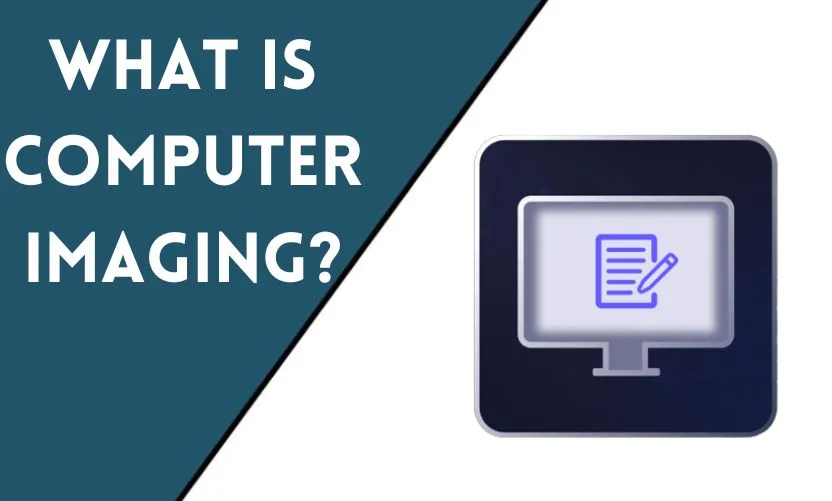
In today’s digital age, computer imaging has become an integral part of our lives. It is a fascinating technology that enables us to create, manipulate, and visualize digital images using computers. From enhancing photographs to creating lifelike visual effects in movies, computer imaging plays a significant role in various industries. In this article, we will delve into the world of computer imaging, its applications, and how it works.
Understanding Computer Imaging
Computer imaging, also known as digital imaging, refers to the process of capturing, manipulating, and displaying visual information using computers. It involves converting analog images or physical objects into digital representations that can be stored, edited, and shared electronically. Computer imaging utilizes advanced algorithms and software to process and enhance images, allowing for greater control over their appearance and content.
The Role of Computer Imaging in Various Fields
Healthcare
In the field of healthcare, computer imaging has revolutionized medical diagnostics and treatments. Medical imaging techniques such as X-rays, CT scans, and MRIs rely on computer algorithms to generate detailed images of the human body. These images aid doctors in diagnosing diseases, planning surgeries, and monitoring patient progress. Computer imaging also plays a crucial role in telemedicine, enabling remote consultations and medical image sharing for expert analysis.
Entertainment and Media
Computer imaging has had a profound impact on the entertainment and media industry. It is widely used in the creation of visual effects for movies, TV shows, and video games. With computer-generated imagery (CGI), filmmakers can bring imaginary worlds and fantastical creatures to life. Additionally, computer imaging allows for realistic character animation and seamless integration of live-action footage with virtual environments.
Architecture and Design
In architecture and design, computer imaging has revolutionized the way professionals conceptualize and present their ideas. Computer-aided design (CAD) software enables architects and designers to create detailed 3D models of buildings, interiors, and products. These models can be rendered with realistic textures, lighting, and materials, providing clients with a virtual representation of the final product. Computer imaging also facilitates architectural visualization, allowing architects to showcase their designs through virtual tours and immersive experiences.
How Computer Imaging Works
Computer imaging involves a series of steps to capture, process, and display images. First, an image is acquired through various means such as scanning, digital photography, or medical imaging devices. Once the image is digitized, it undergoes preprocessing, which includes noise reduction, color correction, and image enhancement techniques. The processed image is then stored in a digital format, allowing for easy manipulation and sharing.
Types of Computer Imaging Techniques
2D Imaging
2D imaging refers to the representation of objects or scenes in two dimensions. It is commonly used in photography, document scanning, and graphic design. 2D images consist of rows and columns of pixels, with each pixel containing information about its color and intensity. Examples of 2D imaging formats include JPEG, PNG, and GIF.
3D Imaging
Unlike 2D imaging, 3D imaging captures and represents objects or scenes in three dimensions. It provides depth and spatial information, enabling realistic visualizations and interactions. 3D imaging techniques include 3D scanning, 3D modeling, and 3D rendering. These techniques are extensively used in industries such as gaming, animation, virtual reality, and product design.
Applications of Computer Imaging
Image Editing and Enhancement
Computer imaging software like Adobe Photoshop has revolutionized image editing and enhancement. With powerful tools and filters, users can retouch photographs, adjust colors, remove unwanted objects, and apply various artistic effects. Image editing software allows for precise control over image elements, empowering photographers and designers to unleash their creativity.
Computer-Generated Imagery (CGI)
Computer-generated imagery (CGI) refers to the creation of images, animations, or visual effects using computer graphics. It is widely employed in movies, commercials, and video games to generate realistic or fantastical elements that cannot be captured with traditional cameras. CGI offers limitless possibilities for storytelling and visual spectacle, enabling filmmakers and game developers to transport audiences to unimaginable worlds.
Virtual Reality (VR) and Augmented Reality (AR)
Computer imaging forms the foundation of virtual reality (VR) and augmented reality (AR) experiences. VR technology creates immersive digital environments that simulate real-world or imaginary settings. AR, on the other hand, overlays virtual elements onto the real world, enhancing our perception of reality. Both VR and AR rely on computer imaging to render and display virtual objects, creating interactive and engaging user experiences.
Advancements and Challenges in Computer Imaging
Computer imaging is constantly evolving, driven by advancements in hardware, software, and algorithm development. The use of machine learning and artificial intelligence has significantly improved image processing capabilities, enabling automatic image recognition, segmentation, and analysis. However, challenges such as data privacy, ethical concerns, and the potential misuse of computer imaging technologies also need to be addressed to ensure responsible and ethical use.
Conclusion
Computer imaging has transformed the way we capture, manipulate, and visualize images. From healthcare to entertainment, architecture to design, this technology has permeated numerous industries, unleashing new possibilities and creative opportunities. With continuous advancements, computer imaging is poised to redefine our perception of reality and empower us to envision a visually immersive future.
Frequently Asked Questions
What are the benefits of computer imaging?
Computer imaging offers numerous benefits, including enhanced image quality, precise editing capabilities, efficient storage and sharing of images, and the ability to create realistic visual effects.
Is computer imaging only used in professional settings?
No, computer imaging is not limited to professional settings. It has become accessible to individuals as well, with user-friendly software and smartphone apps that allow for easy image editing, sharing on social media, and capturing immersive 360-degree photos.
Can computer imaging be used for medical diagnosis?
Yes, computer imaging plays a vital role in medical diagnosis. Techniques like X-rays, CT scans, and MRIs rely on computer algorithms to generate detailed images that assist doctors in identifying diseases and planning appropriate treatments.
Are there any ethical concerns related to computer imaging?
Yes, there are ethical concerns related to computer imaging, such as the potential for image manipulation, invasion of privacy, and the creation of deepfakes, which can be used to deceive or manipulate people.
How can I pursue a career in computer imaging?
To pursue a career in computer imaging, you can consider studying fields such as computer science, graphic design, animation, or visual effects. Acquiring practical skills in image editing software and 3D modeling tools will also be beneficial. Additionally, keeping up with the latest advancements in computer imaging technology through research and industry publications will help you stay at the forefront of this dynamic field.










